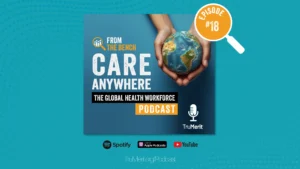With New Research into Hot Flashes During Menopause, Scientists Expand Treatment Options for Women’s Health
Hot flashes during menopause, a common symptom of women’s natural midlife biology, affect more than 80% of women. The causes behind these common hot flashes have remained a mystery to scientists for years. However, recent research has revealed a breakthrough in understanding the root cause of these uncomfortable, sweaty episodes.
Researchers from The Queen’s Medical Research Institute, the Mayo Clinic’s Center for Translational Science Activities, the Institute for Infectious Diseases and Molecular Medicine at the University of Cape Town, among others, have discovered the root cause of hot flashes is actually non-hormonal. They identified that a particular group of neurons in the brain become activated during menopause, which can cause temperature regulation disturbances leading to hot flashes. The activation of these neurons is due to the decrease of estrogen in the brain’s hypothalamus during menopause.
This discovery is one of many helping scientists better understand the root causes and side effects of menopause. Perhaps the most important consequence of this deeper understanding of hot flashes is that it gives women and their doctors a better framework for understanding the role of hormonal therapy in treating symptoms of menopause.
Much skepticism still surrounds hormone therapy for treating hot flashes during menopause and other menopause symptoms. One 2022 study found links between hormone therapy and increased risks of breast cancer and other health conditions. Other studies showed that the benefits of hormone therapy greatly outweigh the risks. Regardless, the most recent developments around the causes behind hot flashes are providing hope for new, non-hormonal, and perhaps better treatments. One drug, fezolinetant, is a non-hormonal treatment for hot flashes currently under review by the U.S. FDA; the most recent round of clinical trials for the drug found it “reduced the frequency and severity of moderate-to-severe vasomotor symptoms,” otherwise known as hot flashes.
So, can this discovery lead to new non-hormonal targeted therapies for hot flashes during menopause? We sourced perspectives and reactions to this research discovery from menopause and women’s health experts, who seem optimistic about the consequences of these findings.
Barbra’s Thoughts
Barbra Hanna, DO, FACOG, NCMP who is the founder & CEO of MyMenopauseRx has spent the last few years helping women feel well, sleep well and live well with menopause. She is quite excited about the recent discoveries and believes studies like these may lead to non-hormonal treatments to help women lead better lives.
“Estrogens have an important role in every tissue of our body. And hot flashes and night sweats that are debilitating through the menopausal transition really wreak havoc on a woman’s quality of life. Yet, some women can’t or don’t want to use menopausal hormone therapy. The scientific discovery of where those hot flashes and night sweats originate from in our brain is not only fascinating but it’s going to help move science forward to improve the quality of life of so many women.”
Kim’s Thoughts
Can this new research help change society’s attitude and baked-in negative assocations toward menopause? Kim Vopni of Pelvienne Wellness believes it can. Kim is the leading go-to expert for pelvic floor exercise programs that have helped numerous women over the years deal with certain symptoms of menopause. Here are her thoughts on a compendium of reporting out of National Geographic surrounding this and other recent research on menopause.
“I was pleasantly surprised to see an entire section dedicated to vaginal health, specifically genitourinary syndrome of menopause, which is an umbrella term that covers a lot of things that I have been speaking and preaching about for many years and coming up to resistance because the word vagina is considered “inappropriate”, especially in platforms doing to do with social media.
The interesting piece about menopause is actually bringing light. The conversation around menopause is bringing light to pelvic floor disorders. They talked about pelvic floor physical therapy, which in my opinion is the most underused women’s resource that we have. I believe every woman should be seeing one from the time we’re sexually active once a year for the rest of our life, just like we see a dentist once a year for our teeth.
I also like that they did include vaginal, estrogen and the safety surrounding that. I believe and see evidence to support starting it around the time of menopause and staying on it for the rest of our life can help decrease UTIs, can help improve sex, can help with incontinence, all these things that we have thought we need to suffer with.
So, I was really delighted by that particular section. The entire article was well-informed but specific of course to the vaginal piece. I think it was well-informed and I hope that it starts to change the landscape for women going forward.”
Dr. Mindy’s Thoughts
For women in our audience seeking a little advice, how should this new research around menopause help clarify the proper steps and strategies for mitigating menopause’s worst symptoms? Dr. Mindy Pelz, a women’s health and fasting expert, and the founder of Dr. Mindy Pelz Co., reacts to National Geographic’s article and provides perspectives on menopause symptom treatment.
“I wanna highlight a couple of important parts of this article. One, everything the article talks about, the hormonal changes that are happening, are really real for women. The hot flashes, the weight gain, the trouble sleeping. Everything starts to shift after 40, and so your lifestyle needs to shift with those hormones. Things like making sure that you are intermittent fasting and adding in some…cycling in the ketogenic diet and looking at your toxic load. Those all become massively important as you go through the menopausal years.
Now the other thing that this article brings up is that we’re revisiting HRT, and I think this is a great thing. We should look at HRT, we should look at bioidenticals, and look at where the safety is for those specific medications for menopausal women. But we can’t look at medication as the only solution. We’re gonna have to pair a healthy lifestyle to it.
So the article really brought to the surface some important topics that aren’t being discussed culturally. So thank you, National Geographic, but I also wanna highlight that we do need to dive into lifestyle. What are the lifestyle changes and what’s the appropriate medication for you? There is not a one size fits all to these symptoms, and so understanding yourself and what’s gonna working with your doctor to figure out what’s best for you becomes imperative.”
Article written by Galina Mikova.









